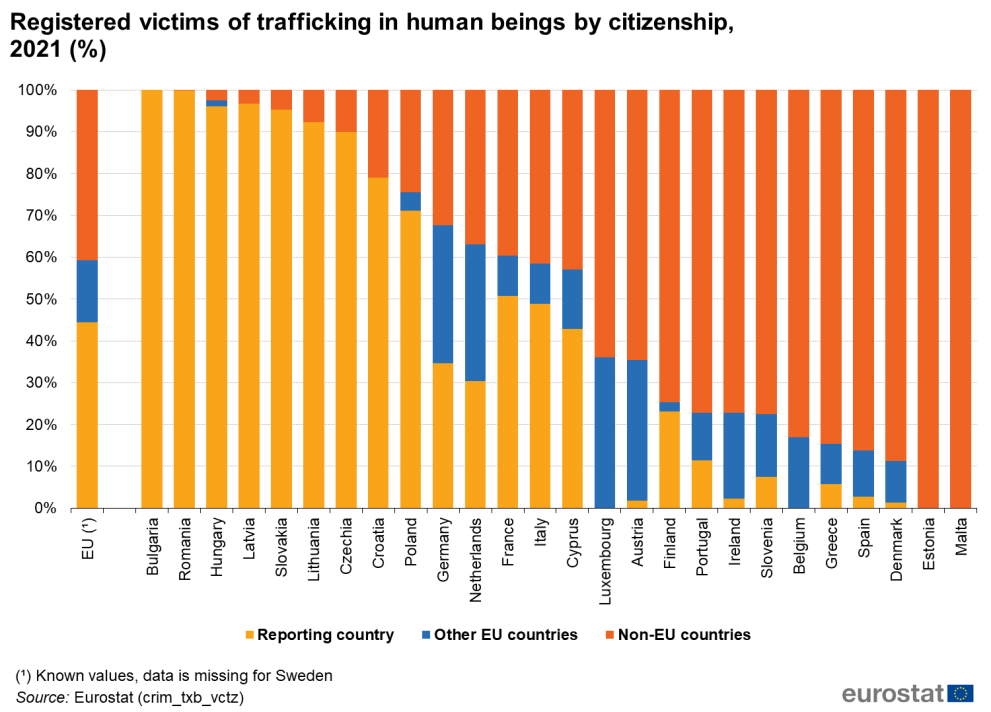
On 9 February, EUROSTAT published the 2021 statistics for trafficking in human beings. In 2021, the number of registered victims of trafficking in human beings in the EU is nearly back on pre-pandemic level with 7 155 victims, which is still by 8% lower than the number of registrations in 2019. The actual number of victims is likely significantly higher than reported data suggests, as these statistics only capture victims that become known to one of the registering entities and many victims remain undetected.
In 2021, for the EU as a whole, 44% of the registered victims were the nationals of the reporting country, which is a significant increase of about 5.2% compared to 2019-2020. The share of non-EU nationals was 41%, which is a slight decrease compared to 2019-2020, when the share of non-EU nationals was 43%.
In 2021, 68.4% of registered victims of trafficking in human beings in the EU were women or girls. The share of women and girls increased slightly from the previous year (67.4% in 2020).
Sexual exploitation was still the predominant form of exploitation in 2021, at 56%, although the prevalence is lower than in the 2008-2019 period (65.9% in average). Meanwhile labour exploitation was 29% in 2021, slightly lower than in 2019 and 2020 (31.8%), but still higher than in previous years. Other exploitative purposes, including use for benefit fraud, criminal activities and forced begging, were at 15.8% in 2021, which is about 5% higher than in 2019-2020.
Taking into account the countries that provided data both in 2020 and 2021, the number of suspected traffickers rose by 12.5% in 2021 compared with 2020 and the number of convicted traffickers increased by 54.9% in 2021 compared with 2020. The number of convicted persons remained much lower than the number of those suspected of trafficking in human beings.
More details can be found in the Eurostat crime database and in the Statistics Explained article.
Note: All EU MS provided data (for both 2020 and 2021) for the number of victims; Belgium and Estonia did not provide data for the number of suspects in 2021. Belgium did not provide data for the number of convictions for 2021. Victims by citizenship is missing for Sweden and the victims by form of exploitation for Sweden and Finland for 2021.
Details
- Publication date
- 9 February 2023
- Author
- Directorate-General for Migration and Home Affairs
